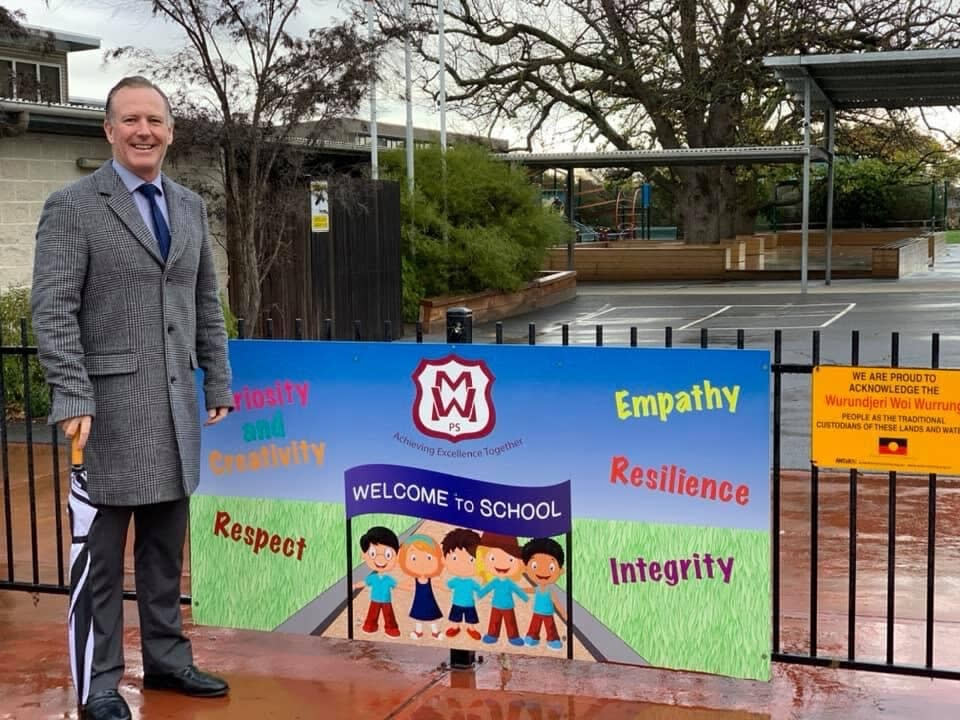


With a looming teacher shortage in Victoria, stakeholders in the education sector are calling for better compensation and assistance to retain teachers in the profession for coming generations.
According to a Victorian Department of Education Supply and Demand report, the demand for teachers in Victoria is expected to surpass supply by 2028 with an expected shortfall of about 5,000 teachers, mostly driven by a drop in supply in the secondary education sector.
The report found that while demand is expected to increase by 12.8 per cent between 2022 and 2028, supply will only increase by 10.6 per cent.
Mount Waverley Primary School (MWPS) Principal Campbell McKay attributes the teacher shortage to the rising expectations of teachers, compared to when he entered the profession in the 1990s.

“There’s a growing expectation over the last 10-15 years that has made the teaching profession so much more accountable,” McKay said.
He said the rising expectation is due to the growing administrative needs and the requirement to cater to all students with no “pressure release valve” to alleviate these expectations.
“That pressure has built up but there’s nothing that’s given, there’s no pressure release valve,” he said.
McKay laments how these expectations and pressures have extended outside the working day.
“In my belief, the number one reason why teachers are leaving education is because there’s too much expected of them and there’s unreasonable expectation outside of school hours.”
In order to properly address why teachers are leaving the profession, McKay said the base expectations of a teacher need to be changed.
“We need to say enough is enough during the school day, teachers should be supported to work hard during the school day and complete the work so they can have the pressure release valve of going home and doing nothing.”
McKay is considering implementing a better work-life balance structure in his school so that teachers are inherently happy in their job.
“Staff shouldn’t be happy because of the fun things we do here; they should be happy because they love their work,” he said.
He spoke about the importance of an initiative called the Professional Learning Communities (PLCs), which was a Department of Education initiative that trained teachers to work collaboratively.
“The PLCs was a fantastic program that helped schools help teachers work together better.
“Schools need to get better at supporting teachers to do the work inside of school hours.”
Most government schools in Victoria have enabled PLCs to encourage teacher collaboration, with the Department of Education trying to have PLCs established at every Victorian government school by June 2024.
McKay said he has done the same with his school and extended the collaborative culture across all teacher responsibilities to encourage teachers to be diligent and share the workload within the school day, so they don’t have to work after hours.
“We’re employed for 7.65 hours a day. There’s no reason we can’t do the work in that time, if we’re organised,” McKay said.
Like McKay, Monash student Jillian Doughty, who is the merchandise and outreach officer for the Monash Education and Teaching Society (META), is advocating for structures of collaboration to be implemented to assist teachers manage their workload.

“The investment into more resources and support for mentorship needs to be ongoing in a teacher’s career," she said.
"Having a good mentor as a novice teacher not only helps alleviate stress, but shows teachers that they are not alone.”
Doughty said many of her peers joined teaching as a result of having met good mentors and being inspired by their teaching.
“A lot of my peers said that a teacher they loved in high school was the reason they went into teaching. It’s having that mentor which is a huge thing that drives pre-service teachers.”
Doughty said employing more staff to help with administrative work and providing more funding to schools are solutions to improve the teacher shortage in Victoria’s classrooms.
“The administrative side of a teacher’s job is huge, so perhaps lessening that or employing people to help might help alleviate teacher burnout,” she said.
Doughty’s solutions reflect McKay’s structure to assist teachers in completing their work efficiently.
She also called for “more funding for things like aid teachers in the classroom … to allow teachers to meet the needs of their diverse classrooms.”
While she still has a passion for pursuing a teaching career, Doughty is nonetheless worried about what this career and its difficulties may entail.
“Throughout my placements in my degree, I realised I loved teaching and helping people grow into who they are meant to be or master something,” she said.
“I’m actually quite scared to go into the profession.”